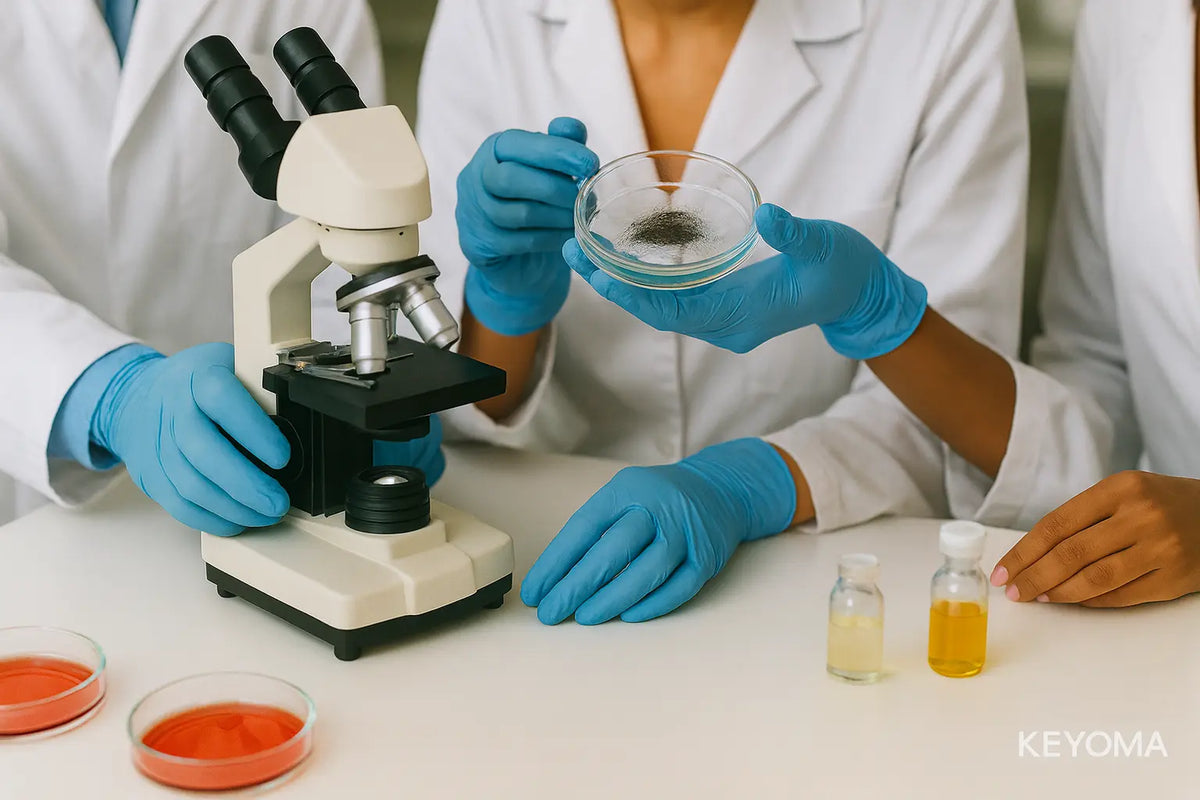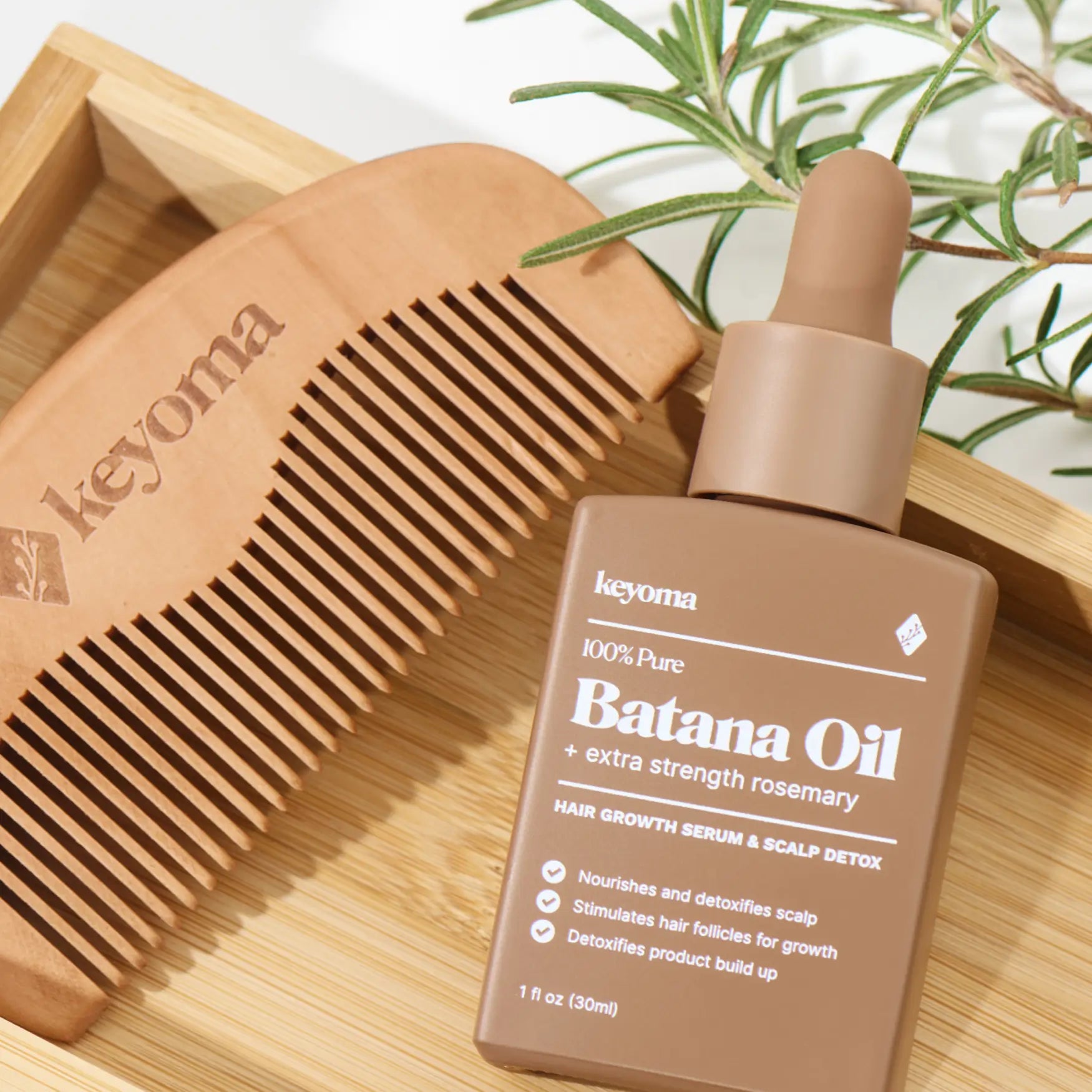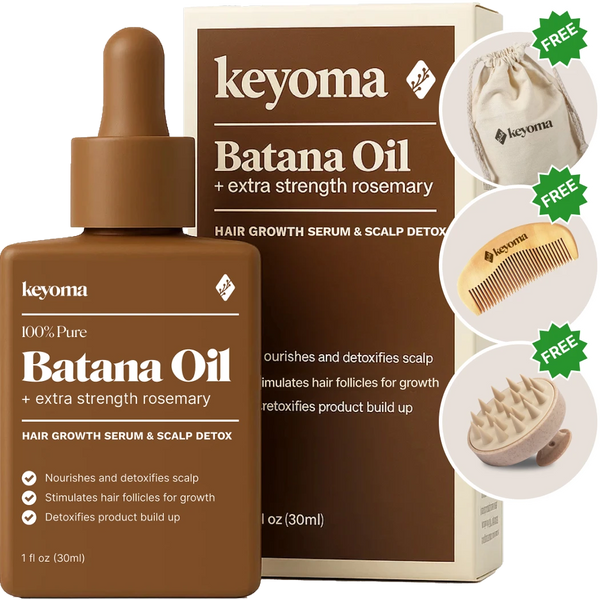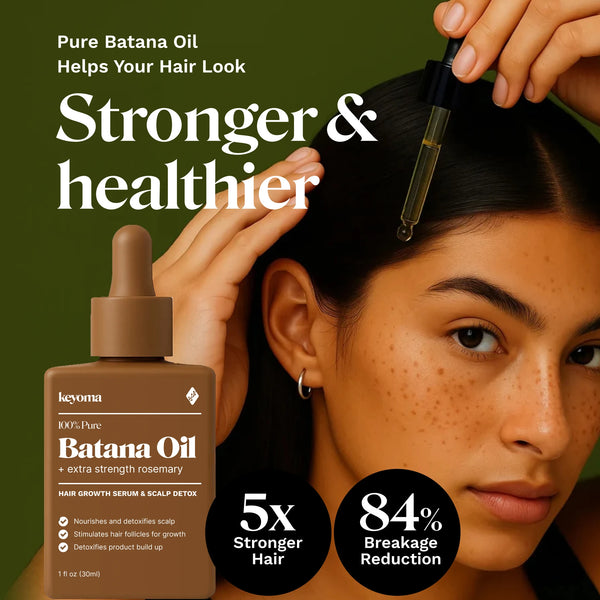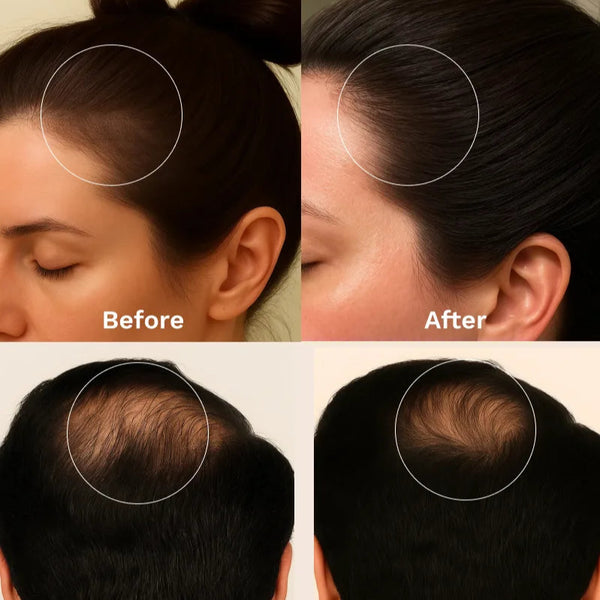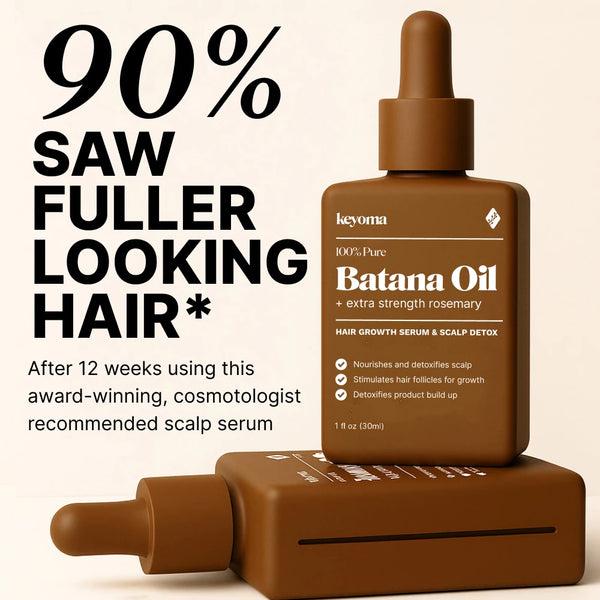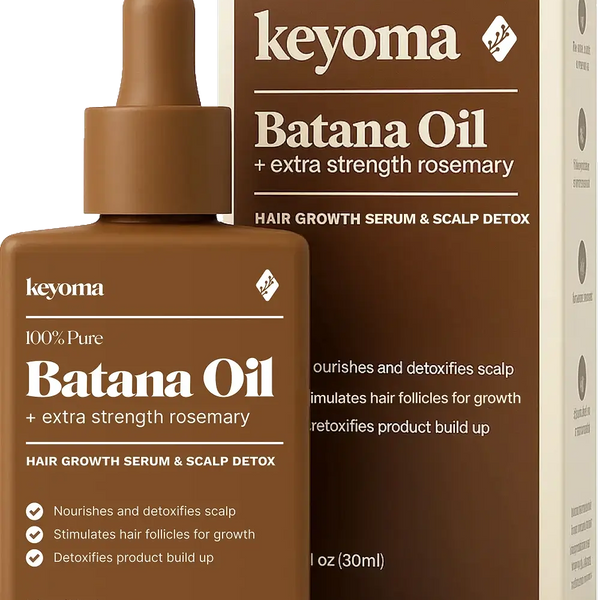In this article
Hair research in the last five years has been moving fast. Between 2020 and 2025, new studies have tested everything from natural extracts and stem cells to lasers, exosomes, and novel immune therapies. Some findings look genuinely promising, while others give new scientific weight to things once dismissed as “old folk remedies.”
So whether you’re searching for answers because your hair feels thinner, you’re staring at clumps in the shower drain, or you’re simply a hair-care enthusiast who loves keeping up with the latest science, this article is for you.
Here, I’ll walk you through the freshest studies on hair regrowth—what they found, why they matter, and how they could shape the future of treating thinning and shedding. Let’s get into it!
Exosome Technology Enhances Natural Ingredients in Treating Male Alopecia
Research: Exosome‑containing plant extract formulation (ECPE) for male alopecia
Year: 2025
Insights:
A new randomized controlled trial published in Life (2025) looked at a topical formula that combined plant extracts with exosomes. After just 16 weeks, the men using ECPE grew noticeably more hair, while the placebo group barely changed.
To put numbers on it, the ECPE group gained about 9.5 new hairs in the measured area compared to only 1.5 in the placebo arm. That’s a big difference for such a short timeline.
As for side effects? Practically none. Only two men reported mild scalp irritation that cleared away on its own. No serious issues came up in the treatment group, which is always good news.
To give you a bit of context, exosomes are basically tiny carriers that carry active compounds deeper into follicle cells. In this study, they helped shuttle the plant extracts Ecklonia cava and Thuja orientalis, boosting how effectively these plant extracts could influence growth activity.
So what does this mean for us? It’s a glimpse into a future where smartly formulated products using natural actives and delivery systems could offer safer, more tolerable alternatives—or even complements—to strong, conventional drugs like minoxidil.
Micrografting Review Suggests Modest But Real Gains in Pattern Hair Loss
Research: Micrografting for androgenetic alopecia – systematic review
Year: 2025
Insights:
A 2025 review pulled together the latest studies on micrografting—a newer regenerative approach for thinning hair—and found that it can deliver modest but noticeable improvements in hair density and shaft thickness.
Some reports showed patients gained about 4 to 7 extra hairs per square centimeter within a few months, and roughly two-thirds saw a visible cosmetic improvement. Side effects were minimal, usually just mild redness or short-lived tenderness.
Before we go further, what exactly is micrografting? In simple terms, doctors take a tiny sample of your own scalp (usually a biopsy about the size of a pencil eraser), process it into a liquid rich in living cells and growth factors, and then inject it back into thinning areas.
It's very much like recycling your scalp tissue to give struggling follicles a boost.
Most studies followed patients for 3–6 months. Sometimes micrografting was done alone, other times alongside platelet-rich plasma (PRP) or similar treatments.
Results weren’t dramatic like a full transplant, but they did make hair look fuller and stronger, especially in people with early or moderate pattern baldness.
That said, there are important caveats. The evidence base is still small, most trials were short, and we don’t yet know how long the gains last without repeat sessions. Plus, the procedure involves specialized equipment and can be costly compared to standard topical care.
Bee Venom Helps Prime Stem Cells for Stronger Hair Growth
Research: Bee Venom Stimulates Growth Factor Release from Adipose-Derived Stem Cells to Promote Hair Growth
Year: 2024
Insights:
A 2024 lab study found that when researchers exposed stem cells taken from fat tissue (adipose-derived stem cells, or ADSCs) to small, controlled doses of bee venom before using them, those cells became more effective at stimulating hair regrowth.
In mouse models of alopecia, the “trained” stem cells worked harder than their untreated counterparts. They pushed follicles into the growth phase more quickly, produced thicker hair shafts, and increased the number of follicles actively growing.
Here’s what was done. Scientists treated them with bee venom in the lab first, then applied them to the mice. The venom essentially primed and "supercharged" the regenerative potential of stem cells, making them release more growth-friendly signals once they reached the follicles.
There are caveats, of course. Now, there are caveats. This was an animal study, not a human trial, so we don’t know yet how well it translates to real-world treatments. And because bee venom can cause allergies or irritation, figuring out safe dosing is just as important as proving effectiveness.
Still, the study hints at a future where natural bioactive compounds like bee venom may be paired with regenerative therapies could make both work better than either one alone.
Laser Therapy Review Confirms Steady Gains in Hair Density
Research: Lasers in the management of alopecia – review of established therapies and advances in treatment
Year: 2024
Insights:
A 2024 review pulled together clinical studies on light- and laser-based devices for hair loss. It found that low-level laser therapy (LLLT) and similar devices improved hair density and shaft thickness, particularly in people with early to moderate androgenetic alopecia.
In some short-term studies, results were on par with minoxidil, which is impressive for a non-drug option. Side effects were minimal, usually just mild warmth or redness on the scalp, which tells us these devices are generally safe to use alongside other treatments.
So what exactly did researchers look at? They looked at everything from the well-known LLLT combs, helmets, and caps to newer options like fractional lasers and laser-assisted drug delivery.
Across the board, the devices worked through a few key mechanisms: increasing blood flow, calming inflammation, and nudging sluggish follicles back into the growth (anagen) phase.
With regular sessions over a few months, they can coax follicles back into action, making hair look fuller and stronger. Fractional lasers may even help topical treatments absorb better, which opens the door for future “combo” therapies.
That being said, we're not to expect dramatic overnight changes. The gains are gradual, most noticeable when you start early, and results can vary depending on the device.
New Ritlecitinib Study Strengthens Evidence for Lasting Hair Regrowth in Autoimmune Loss
Research: Ritlecitinib (LITFULO) trial
Year: 2023
Insights:
The phase 2b/3 ALLEGRO trial, published in The Lancet and summarized by NAAF and Dermatology Times, showed that oral ritlecitinib can spark real hair regrowth in people with severe alopecia areata.
After about six months of treatment, nearly one in four patients (23%) on the drug grew back most of their hair, compared to only a tiny fraction (1.6%) on placebo. And when doctors followed patients longer, many of them went on to reach near-complete coverage within two years.
Even patients who started out on placebo and later switched to the drug improved, which confirmed the benefit wasn’t just coincidence.
For context, ritlecitinib is a JAK inhibitor—a type of drug that tamps down the overactive immune response driving alopecia areata.
JAK stands for Janus kinase, an enzyme that helps send signals in the immune system. In alopecia areata, the immune system mistakes hair follicles as a threat and attacks them—that’s the “immune misfire.”
By blocking JAK3 and TEC kinases, ritlecitinib quiets that attack, giving follicles a chance to recover and produce hair again.
The biggest takeaway here is that even severe autoimmune hair loss isn’t always permanent. With consistent treatment, follicles can recover, although it often takes months to see changes, and continued use may be needed to keep results.
Another thing to keep in mind. While serious side effects were uncommon, JAK inhibitors as a class can increase risks like infections or cardiovascular issues. That’s why close monitoring with a doctor is essential if you’re on this type of treatment.
Combination Therapies Outperform Single Treatments
Year: 2023
Insights:
A 2023 network meta‑analysis pulled together data from 27 trials involving more than 1,100 patients with androgenetic alopecia. This allowed researchers to compare multiple treatments, even if they weren't directly tested against each other in the same trial.
The standout result was that combining 5% minoxidil with microneedling produced the biggest gains in hair density, clearly outperforming minoxidil alone, PRP alone, or microneedling alone.
On average, this combo delivered about 13 more hairs per square centimeter than minoxidil by itself. Adding PRP to minoxidil also improved outcomes, though not as strongly as the microneedling combination.
These results were brought about by a method where they ranked each option by SUCRA scores, a statistical way of showing which treatments are most likely to be effective.
In simple terms, this study confirms what many dermatologists are already seeing in practice: hair regrowth tends to be better when you layer treatments instead of relying on just one.
Rosemary Oil Emerges as a Natural Alternative for Pattern Hair Loss
Year: 2024
Insights:
This review pulled together clinical and preclinical evidence on plant-based therapies for pattern hair loss, and rosemary oil stood out as one of the most promising.
In a six‑month randomized trial, patients using rosemary oil had increases in hair counts similar to those using 2% minoxidil. The key difference? The rosemary group reported fewer side effects like itching, which often makes minoxidil tough to stick with.
Researchers compared diluted rosemary oil directly against topical minoxidil in men with androgenetic alopecia, while also reviewing lab studies on how rosemary compounds act.
The findings showed rosemary extracts block 5-alpha reductase—the enzyme that drives DHT production, the main culprit in follicle shrinkage. They also provided antioxidant and anti‑inflammatory effects, plus better scalp circulation.
For those who cannot tolerate minoxidil, this is really encouraging news, because this proves rosemary not as a folk remedy but a credible natural option backed by modern research.
And it’s exactly why Keyoma pairs rosemary with batana oil in our formulation. Batana brings its generations-old nourishing tradition, while rosemary adds the modern science that supports scalp stimulation and regrowth.
Featured Product
100% Pure Batana Oil + Rosemary
↓Best Batana Oil to Buy↓
1 Month
Subscribe & Save
- 30-day supply delivered monthly $35
- 30% off for life $6
- Free haircare essentials kit $33
- Free custom wooden comb $10
- Free scalp massager $15
- Free eco-friendly travel bag $8
- 30-Day Money Back Guarantee
- Free Shipping
- Online portal for easy cancel, skip, or pause.
1 Month One Time Purchase
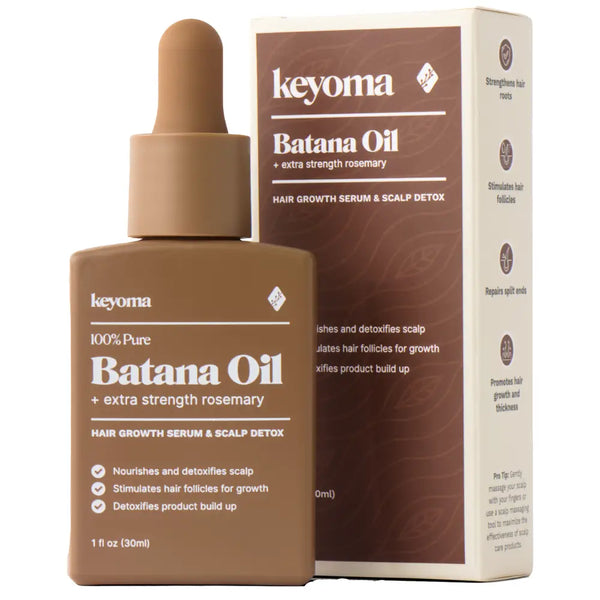
- 30-day supply $50
- 30% off for life $6
- Free haircare essentials kit $33
- Free custom wooden comb $10
- Free scalp massager $15
- Free eco-friendly travel bag $8
Your Cart
Your Cart is empty
Let's fix that
You might like...
Search our store

